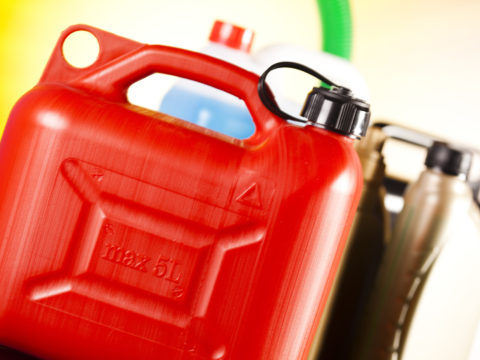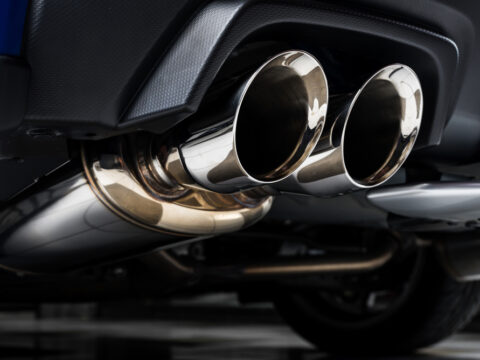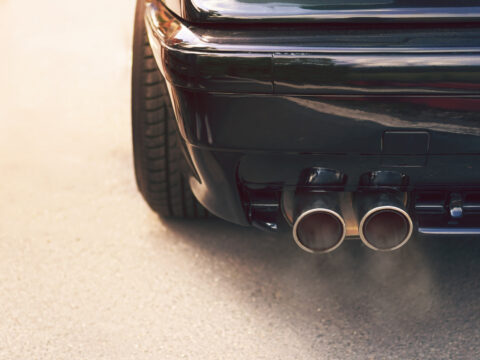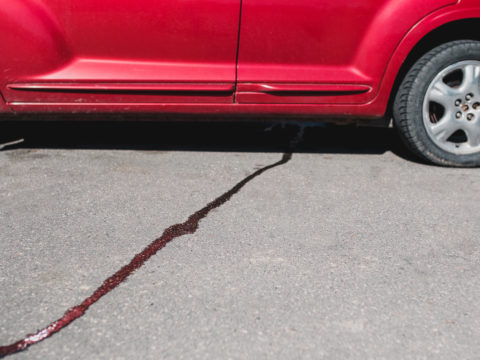There’s nothing worse than starting your Duramax ignition and your dashboard flashing an error code. Back in the day, you’d pop the hood, wiggle a few things, and fix the problem. GM’s Duramax truck line has a reliable diesel engine, but that doesn’t mean something can’t go wrong.
A P20EE Duramax code indicates that the catalyst isn’t operating efficiently.
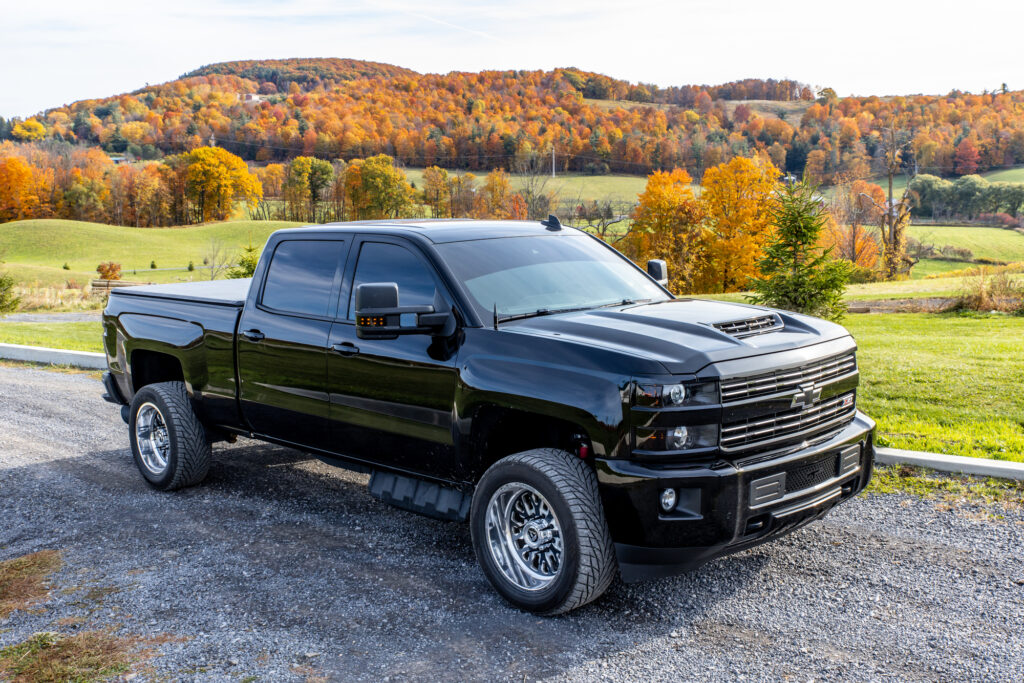
Contents
What Is the P20EE Code in a Duramax?
When the P20EE indicator light comes on, the system tells the operator that the vehicle has encountered a malfunction. In this case, the truck isn’t running at optimum levels. The NOx conversion of nitrogen and water in conjunction with the diesel exhaust fluid (DEF) isn’t exchanging as it should.
The catalyst must convert nitrogen and water effectively or fall below the preset threshold. Diesel engines use a reductant catalyst system. This system turns nitrogen oxide (NOx) into nitrogen and reduces harmful and dangerous NOx molecules that pollute the atmosphere.
A selective catalytic reduction (SCR) device injects DEF into the exhaust system before entering the catalytic converter. The converter raises the temperature to improve the system by converting NOx but also prolongs the durability of a catalytic converter.
Duramax P20EE Code Diagnosis and Symptoms
P20EE is part of the OBD-II codes that indicated SCR NOx catalyst malfunctions and that the system operates below the threshold. It is also one of the most common codes.
What Causes the P20EE Code?
When the temperature in the exhaust system doesn’t reach the correct temperature to burn off those noxious particles, then the injection of a DEF fluid kicks in and raises the diesel particulate filter (DPF) temperature. These components must work in tandem, or the reductant catalyst can’t perform well.
The result is a P20EE code.
Black Smoke
Black smoke pluming out the tailpipe of a Duramax is a sure signal something is wrong. Ignoring these signs can cause further damage to the vehicle and reduce engine performance.
It also means that the truck won’t pass an emissions check. Eventually, other codes appear.
Black smoke is a prevalent engine problem indicating the air-to-fuel ratio is off balance. It means too much fuel and not enough air. Another way to say it is that too much diesel enters the system, but there’s not enough oxygen to burn the incoming fuel sources. The black smoke contains large diesel fuel particles that haven’t been properly converted or burned off as fuel.
It means you’re not getting the best fuel mileage.
If you have access to diagnostic tools, scan for:
- ECM and find the freeze frame data codes that indicated failures
- Check for NOx-related codes in the vehicle history log
- Also, manually inspect the exhaust system and hose fitting for leaks, damage, and obstructions
- Review DPF and SCR catalyst for damage
- Find the DEF fill tube and look for holes, cap closure with a perfect seal
- Find the DTC status with the ECM to make sure SCR is operational and not disabled
- Review the engine and preview for signs of damage, or excessive fuel consumption from an injection misfire and loss of turbo boost
White Smoke
Less apparent white smoke means the diesel fuel entering the combustion chamber isn’t converted as it should be. A common problem that produces white smoke is low engine compression. Another is that there is water in the fuel or the fuel pump timing is functioning well because there is a lack of diesel entering the pump in the sequence it should.
Blue Smoke
Blue smoke means your Duramax is burning engine oil. This is a more severe problem since engine oil shouldn’t be in engine components where it can burn. If you’re lucky, perhaps you just put too much oil in the engine.
However, you could have a damaged injector pump or lift pump for more serious problems. Another regular culprit is the valve stem seals or valves, worn cylinders, and piston rings.
DEF Contamination
Contamination frequently occurs with DEG pump purchases. It means that a corrosive agent in the tank corrodes fuel system components. Engine performance suffers significantly.
Circuit Problems
Trucks and vehicles that traverse over rugged terrain might experience damaged wires and loose connections. It could trigger a code alert.

P20EE Code Duramax Fix
Tackling Duramax P20EE code problems takes some mechanical know-how and the right tools. Sometimes it’s best to let the professionals handle the situation.
Black Smoke
If black smoke is the cause, your Duramax needs adjustments or replacements to the faulty injectors or injector pump, air filter replacements as insufficient oxygen can enter the system, and an inadequate EGR (exhaust gas recirculation) valve. Another culprit could be a damaged turbocharger.
White Smoke
If you suspect bad fuel with water in it, replace the fuel. A few tips to check for water in the tank:
- Fuel with water in the tank smells foul (a distinguishable difference)
- Look for microbe growth
- Use a water-finding paste on the dip-stick
- Fuel with water looks darker
- Use fuel additive boosters
Drain and replace the bad fuel but dispose of it carefully at your local depot.
Blue Smoke
If you don’t have the time or tools, call a qualified mechanic or your dealer’s garage and have the injector pump and lift pump replaced. Cylinders and piston rings also require know-how to replace but adding X-tra lube might fix the problem. You might add new valves and valve stem seals when replacing these parts.
DEF Contaminants
Signs of DEF contaminants are apparent; you’ll need to replace fuel filters, pumps, injectors, and other parts within the fuel system. Stop buying from the station that sold you contaminated fuel.
Fix 5 Circuit Problems
Manually inspect the wiring in your truck and engine compartment for any corroded or loose wiring. Or, take it to your local certified garage.
How Serious Is the P20EE Code?
Like all modern vehicles, a Duramax comes with sophisticated components and the latest automotive technology to prolong the vehicle’s life. A P20EE code tells you something isn’t working as it should. Your truck might fail an emission test.
Further, a P20EE code means your vehicle isn’t performing as it should. You’ll experience reduced engine performance and a lack of fuel efficiency, which is vital in today’s economy.
Can you drive with a P20EE code?
Prepare to fix the P20EE as quickly as you can. You can drive for short distances, but you won’t have the engine performance or fuel efficiency. In the long run, it will cost more if you do not fix it immediately.
Also, if you don’t fix it, the system override will reduce your speed capability.
Most P20EE codes don’t mean you need a new catalytic converter. However, other legends from the OBD-II category might point in the direction of the actual problem. Make a record of the codes, and freeze-frame the data.

